Description
The **AvaSpec-ULS2048XL-EVO** is a high-performance spectrometer designed for those who demand superior sensitivity and speed in their spectroscopic measurements. This state-of-the-art instrument is part of the SensLine series, known for its enhanced UV and NIR sensitivity. At its core, the AvaSpec-ULS2048XL-EVO features a back-thinned CCD detector with large monolithic pixels measuring 14x500 microns. These large pixels contribute to its exceptional quantum efficiency, particularly in the UV range from 200-400 nm and the NIR range from 950-1160 nm. This makes it an ideal choice for applications requiring precise UV and NIR detection.
A key advantage of the AvaSpec-ULS2048XL-EVO is its high-speed capabilities, courtesy of its advanced AS7010 electronics board. This board supports USB3 and Gigabit Ethernet connections, allowing for rapid data transfer and enhanced signal processing. Users can achieve scan speeds as fast as every 2 milliseconds, ensuring that no detail is missed in dynamic measurements. Additionally, the spectrometer's electronic shutter allows for integration times as short as 2 microseconds, providing flexibility for a wide range of experimental setups.
The design of the AvaSpec-ULS2048XL-EVO is both versatile and user-friendly. It offers a variety of configuration options, including different slit sizes, gratings, and fiber-optic entrance connectors (SMA or FC/PC). To further boost its sensitivity, an optional detector collection lens is available, enhancing sensitivity by up to 60% when used with larger core fibers. For those concerned with second-order effects and deep-UV measurements, the spectrometer can be equipped with an order-sorting filter and purge ports. The comprehensive package includes AvaSoft-basic software, a USB cable, and a detailed manual, ensuring that users have all the tools they need to get started quickly and effectively.
AvaSpec-ULS2048CL-EVO UV 3600 Spectrometer
Specifications
| Monochromator Type: | Czerny-Turner |
|---|---|
| Effective Focal Length: | 75 mm |
| Diffraction Grating: | 300 lines/mm |
| Grating Blaze Wavelength: | 300 nm |
| Spectral Range: | 200 – 1100 nm |
| Spectral Resolution (Avg): | 1.5 nm |
Features
- High Sensitivity: The AvaSpec-ULS2048XL-EVO spectrometer features a back-thinned CCD with large monolithic pixels (14x500 microns) offering exceptional efficiency in the UV (200-400 nm) and NIR (950-1160 nm) ranges.
- Fast Integration Time: Equipped with an electronic shutter, it supports integration times as low as 2 microseconds.
- Enhanced Sensitivity: Optional detector collection lens improves sensitivity by up to 60% when used with larger core fibers.
- Flexible Configuration: Offers a range of slit sizes, gratings, and fiber-optic entrance connectors (SMA or FC/PC).
- Advanced Electronics: Utilizes the AS7010 electronics board with USB3 (10 times faster than USB2) and Gigabit Ethernet for improved signal processing.
- Rapid Data Transfer: Capable of delivering a scan every 2 milliseconds with a data transfer speed of 2.44 ms/scan via USB3.
- Comprehensive Software Package: Comes with AvaSoft-basic software, USB cable, and a detailed manual for easy setup and operation.
Applications
- Environmental Monitoring: Analyze air, water, and soil samples to detect pollutants and ensure compliance with environmental standards.
- Pharmaceuticals: Measure the concentration of active ingredients and impurities in drug formulations for quality control.
- Food and Beverage Industry: Monitor the quality and safety of food products by analyzing ingredients and detecting contaminants.
- Biotechnology: Study biological samples, such as proteins and nucleic acids, for research and development purposes.
- Semiconductor Industry: Characterize materials and monitor production processes to ensure the quality of semiconductor components.
- Forensics: Analyze evidence from crime scenes, such as fibers, paints, and biological samples, to support criminal investigations.
- Agriculture: Monitor soil and plant health by analyzing nutrient content and detecting diseases or pests.
- Petrochemical Industry: Analyze crude oil and its derivatives to optimize refining processes and ensure product quality.
- Art and Cultural Heritage: Examine artworks and historical artifacts to study their composition and preserve them for future generations.
- Material Science: Investigate the properties of new materials and composites for industrial applications.
Frequently Asked Questions
What is the resolution of the AvaSpec-ULS2048XL-EVO spectrometer?
What is the interface used for connection to a PC?
What is the sensitivity of the AvaSpec-ULS2048XL-EVO spectrometer?
What is the integration time range of the AvaSpec-ULS2048XL-EVO spectrometer?
What is the wavelength range of the AvaSpec-ULS2048XL-EVO spectrometer?
Similar Products
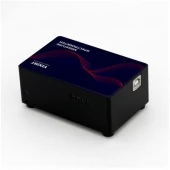
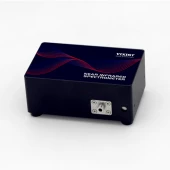
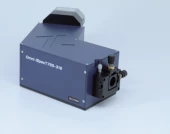
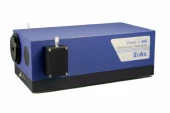
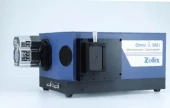
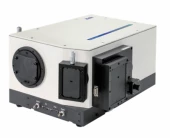
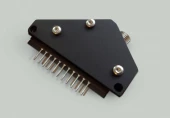
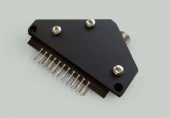




Your inquiry has been received.
Create an account by adding a password
Why create an account?
- Auto-complete inquiry forms
- View and manage all your past messages
- Save products to your favorites
- Close your account anytime — no hassle
